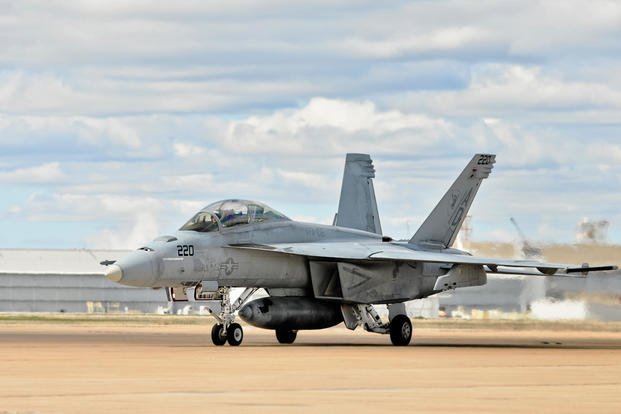A top U.S. Navy modernization official on Tuesday had to justify to lawmakers the service's decision to kill plans to build 36 new F/A-18 Super Hornets in the midst of a strike fighter shortage.
Modernization officials from the Navy, Marine Corps, Air Force and Army testified at a hearing Tuesday before the House Armed Services Committee's Tactical Air and Land Forces subcommittee on aircraft and helicopter programs in the proposed fiscal 2021 defense budget.
The subcommittee's ranking member, Rep. Vicky Hartzler, R-Missouri, questioned the Navy's elimination of 36 Super Hornet new builds when the service is already short 49 strike fighters.
"That's one carrier wing," Hartzler said. "I feel like this is too much operational risk."
The planned cut to Super Hornets would free up $4.5 billion to fund the accelerated development of the next-generation, carrier-based fighter program over the five-year, Future Years Defense Plan, according to a Feb. 10 U.S. Naval Institute story.
Related: Navy, Marine Corps Racing to Cut $40 Billion in Spending
The Navy's fiscal 2021 budget "fully funds" the production of 24 new F/A-18 aircraft, said James Geurts, assistant secretary of the Navy for Research, Development and Acquisition.
The service also plans to upgrade 40 older aircraft in its service life extension program (SLEP), he said.
"As we [bring] the mission-capable rate of aircraft up across the Department of the Navy, that gives us additional up-aircraft to help balance that shortfall," Geurts said.
It currently takes 18 months to upgrade aircraft in the SLEP, but the Navy has set a goal to complete the process in 12 months, he added.
But Hartzler wasn't satisfied.
"So, if you add all those up, this is a severe shortage that we are experiencing, and if you don't account for the attrition rate actually in combat, we would have a very large gap there potentially," she said.
Geurts admitted that the Navy is taking a risk with this plan until the late 2020s.
"I think 2029 is when we will get to the full fighter inventory, so we have had to take some risks as we balance that," he said.
-- Matthew Cox can be reached at matthew.cox@military.com.
Read More: Under the Wire, Navy Says it Has Met Mattis' Fighter Jet Readiness Deadline













